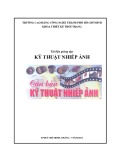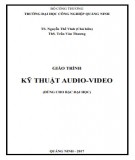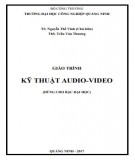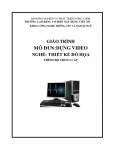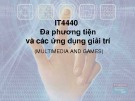Nguyễn Công Phương
DIGITAL IMAGE PROCESSING
Image Transforms
Contents
Introduction to Image Processing & Matlab Image Acquisition, Types, & File I/O Image Arithmetic
Image Transform Spatial & Frequency Domain Filter Design Image Restoration & Blind Deconvolution
Binary Image Processing Image Encryption & Watermarking Image Classification & Segmentation
I. II. III. IV. Affine & Logical Operations, Distortions, & Noise in Images V. VI. VII. VIII. Image Compression IX. Edge Detection X. XI. XII. XIII. Image – Based Object Tracking XIV. Face Recognition XV. Soft Computing in Image Processing
sites.google.com/site/ncpdhbkhn
2
Image Transforms
1. Discrete Fourier Transform (DFT) in 2D 2. Wavelet Transform 3. Hough Transform
sites.google.com/site/ncpdhbkhn
3
DFT (1)
M N 1
1
j
um vn M N
2
(
( , ) F u v
, ) f m n e
1 2 N
m
n
0
0
1 M N
1
j
um vn M N
2
f m n , )
(
F u v e ( , )
1 2 N
m
n
0
0
• For an image of size M×N. • f(m,n): the image in the spatial domain. • F(u,v): in the Fourier space.
sites.google.com/site/ncpdhbkhn
4
DFT (2)
• DFT FFT (Fast Fourier Transform). • F(0,0) represents the DC component of the image,
which corresponds to the average brightness. • F(N – 1, N – 1) represents the highest frequency. • DFT is used to access the geometric
characteristics of a spatial domain image. • In most implementation, the Fourier image is shifted in such a way that the DC value (the image mean), F(0,0), is displayed in the center of the image. The further away from the center an image point is, the higher is its corresponding frequency.
sites.google.com/site/ncpdhbkhn
5
Image Transforms
1. Discrete Fourier Transform (DFT) in 2D 2. Wavelet Transform 3. Hough Transform
sites.google.com/site/ncpdhbkhn
6
Wavelet Transform (1)
1 M N
1
2
(
,
,
,
)
f m n , )
(
m a n a 1 ,
F a b a b 1 2
1
2
m
0
n
0
b 2
b 1
1 b b 1 2
f m n , )
(
(
,
,
,
)
m a n a 1 ,
F a b a b 1 2
1 1 1 1 A 1 B 1 A 2 B 2 2 1 1 2
b 1
b 2
2
1 b b 1 2
2
m a n a 1 ,
:
•
a specific type of
b 1
b 2
1 b b 1 2
wavelet with scaling & shifting in x & y axes as (a1,b1) & (a2,b2), respectively. • Haar, Daubechies, Gaussian, Mexican hat, etc.
sites.google.com/site/ncpdhbkhn
7
a 0 0 0 0 a 1 b 1 b 2
Wavelet Transform (2)
• Wavelet transform takes a mother wavelet (e.g., Haar), and the signal is translated into shifted & scaled versions of this mother wavelet.
• Used to divide the information of an image into
approximation & detail subsignals: – Approximation subsignal: shows the general trend of
pixel value,
– Detail subsignals: show the vertical, horizontal, &
diagonal details or changes in the image.
• Applied in image filtering & image compression.
sites.google.com/site/ncpdhbkhn
8
Image Transforms
1. Discrete Fourier Transform (DFT) in 2D 2. Wavelet Transform 3. Hough Transform
sites.google.com/site/ncpdhbkhn
9
Hough Transform
m
cos
n
sin
• From the rectangular coordinate system to the
polar coordinate system.
• m, n: in the rectangular system. • ρ, θ: in the polar system. • Can be commonly used to detect regular curves such as lines, circles, ellipses, etc.
sites.google.com/site/ncpdhbkhn
10


